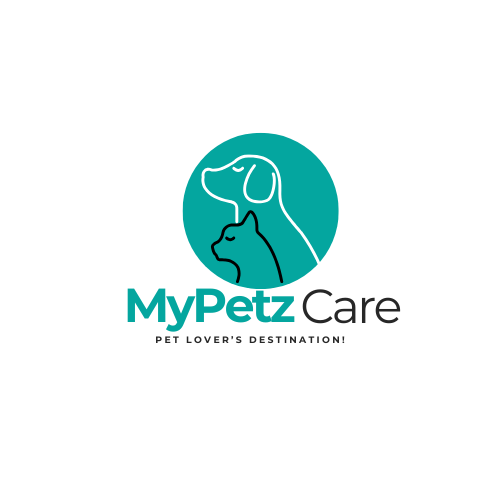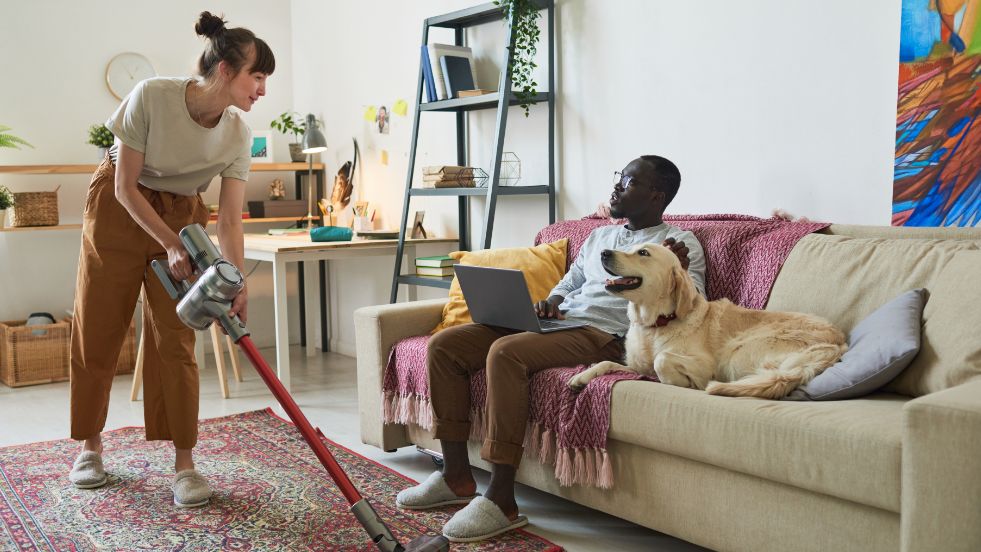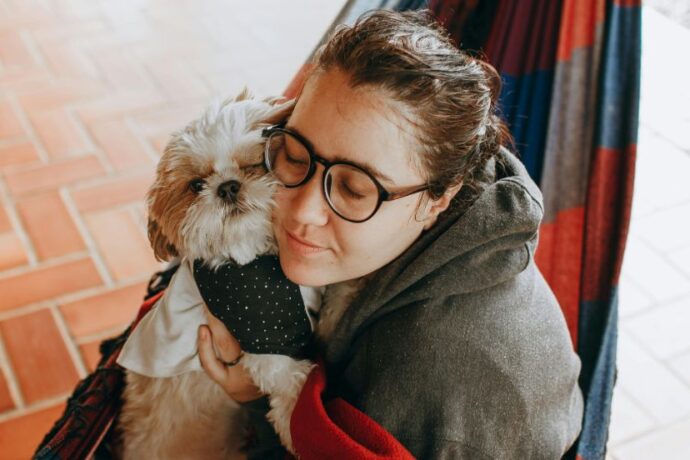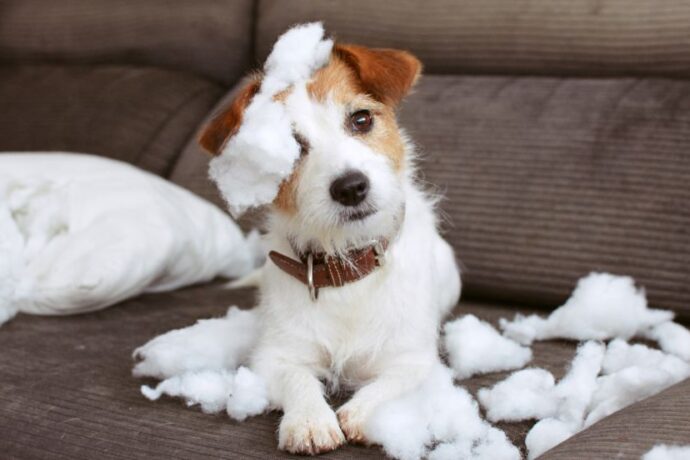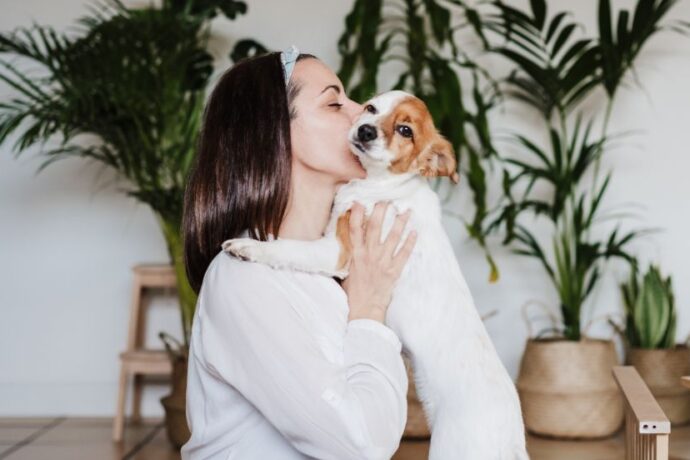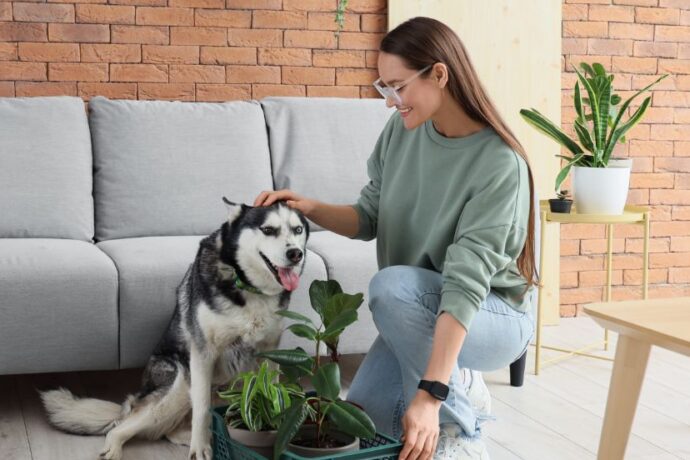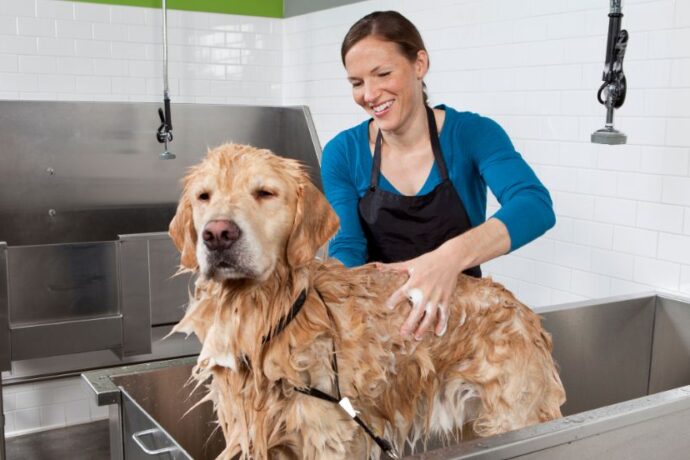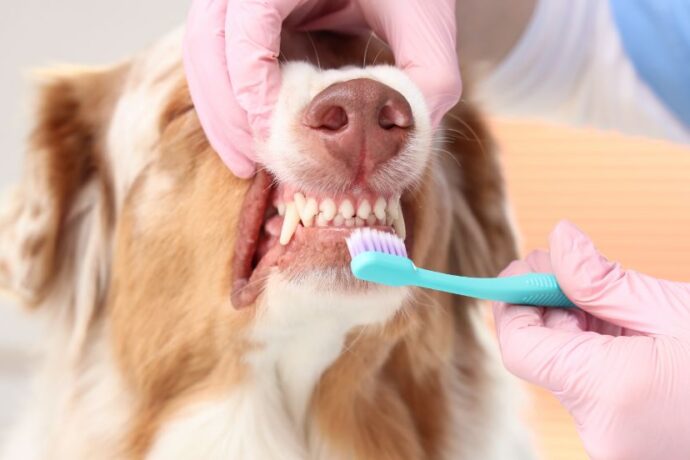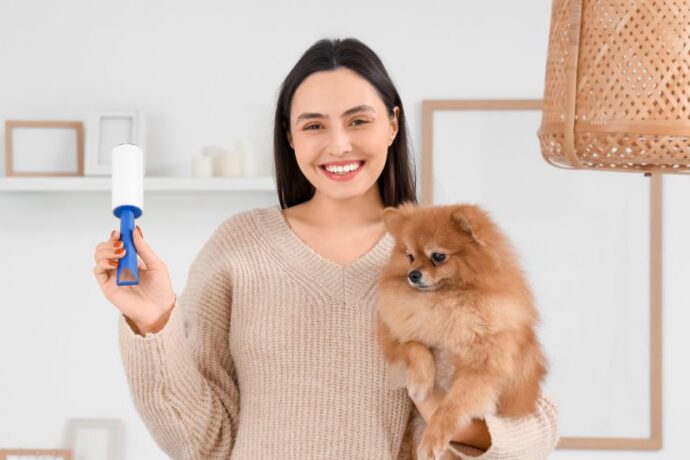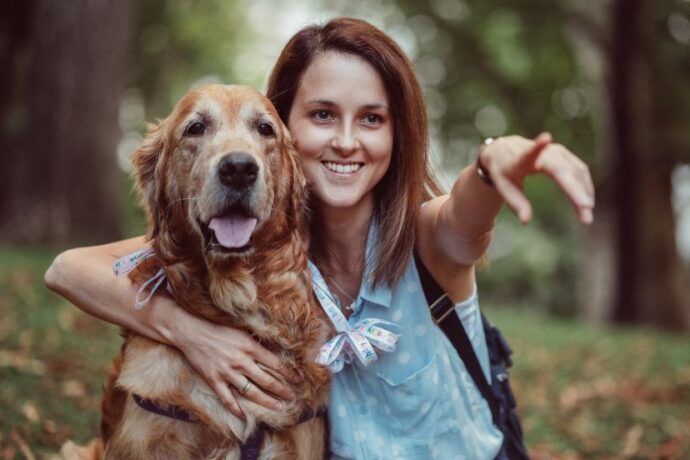Sharing your life with a dog is one of the greatest joys in the world — wagging tails, endless cuddles, and loyal companionship. But let’s be honest: dogs also bring muddy paw prints, lingering odors, and fur that seems to multiply overnight. Maintaining a clean home while living with a canine companion can feel like a never-ending battle. Fortunately, there are clever, science-backed strategies that make it much easier.
From odor elimination to fur control and everything in between, here are 15 genius cleaning hacks every dog parent should know — tested, practical, and surprisingly simple.
15 Genius Cleaning Hacks Every Dog Owner Should Know
1. Use a Rubber Glove to Remove Pet Hair from Furniture
Forget lint rollers. A simple damp rubber glove works wonders for removing hair from couches, bedding, and car seats. The static charge helps lift fur instantly — just rinse it off and reuse. Researchers studying static attraction in textiles confirm that rubber surfaces create the perfect friction for hair collection.
2. Keep Dog Odors Away with Baking Soda
Sprinkle baking soda on your dog’s bed or carpet, let it sit for 15–20 minutes, and then vacuum. Baking soda neutralizes acidic odors by balancing pH levels. A study published in the Journal of Chemical Education supports its effectiveness as a natural deodorizer — safe for both dogs and humans (1).
3. Wipe Paws Before Entering the House
Create a “paw-cleaning station” near the door with a towel and a shallow tray of water. A quick wipe prevents mud and bacteria from tracking inside. Veterinary microbiology research confirms that dogs’ paws can carry E. coli and other pathogens — making this step both hygienic and protective for your home.
4. De-Fur Carpets with a Squeegee
A window squeegee isn’t just for glass — it’s a secret weapon for pet hair. Run it across carpets or rugs, and the rubber edge will gather the embedded hair that your vacuum misses. The technique works due to friction and static buildup, loosening stubborn strands deep within carpet fibers.
5. Wash Dog Toys in the Dishwasher
Rubber and plastic toys can safely go into the dishwasher (top rack only, no detergent). The high temperature and water pressure kill bacteria and remove grime effectively. Studies show dishwashers can remove up to 99% of household bacteria, making it a safe method for sanitizing pet items.
6. Keep Dog Bedding Fresh with White Vinegar
Add half a cup of white vinegar to your washing machine when cleaning dog beds, blankets, or towels. Vinegar naturally breaks down odor-causing bacteria and removes buildup from detergent. It’s a gentle, non-toxic alternative supported by environmental cleaning studies.
7. Use Baby Wipes for Quick Clean-Ups
Keep fragrance-free, alcohol-free baby wipes handy for cleaning muddy paws or wiping fur between baths. Many vets recommend hypoallergenic wipes for dogs with sensitive skin, as they maintain skin pH balance without irritating it.
8. Remove Urine Odors with Enzymatic Cleaners
For accidents on carpets or furniture, enzymatic cleaners are a must. These products contain beneficial bacteria that digest the organic compounds in urine, eliminating the smell. Scientific reviews in Applied Microbiology and Biotechnology confirm that enzyme-based cleaners outperform traditional chemical ones for organic stain removal (2).
9. Brush Your Dog Regularly to Minimize Shedding
The best cleaning hack? Prevent the mess before it starts. Brushing your dog daily removes loose fur and dander, keeping it off your floors and furniture. Grooming studies show regular brushing also improves skin health and reduces allergens in the home.
10. Cover High-Traffic Areas with Washable Throws
Protect your couch or bed with machine-washable throws or slipcovers. They catch fur and dirt, and a quick wash restores freshness. Fabric science research supports the use of microfiber materials, which trap pet hair efficiently while being easy to clean.
11. Deodorize Carpets with Cornstarch
If baking soda isn’t available, cornstarch is another natural deodorizer. Sprinkle it on carpets and rugs, let it sit for 20 minutes, and vacuum thoroughly. It absorbs moisture and oils that cause pet odors without harsh chemicals.
12. Refresh the Air Naturally with Activated Charcoal
Instead of masking dog smells with air fresheners, use activated charcoal bags. Charcoal absorbs volatile organic compounds (VOCs) responsible for bad odors. According to Environmental Science & Technology, activated carbon effectively purifies indoor air without synthetic fragrances (3).
13. Use Lint Rollers on Lampshades and Curtains
Pet hair sticks to soft fabrics like magnets. Run a lint roller or sticky tape along lampshades, curtains, or even your clothes before guests arrive. It’s quick, effective, and keeps surfaces looking fresh between deeper cleans.
14. Clean Food and Water Bowls Daily
A 2011 study in Biofilms and Microbiomes found that pet food bowls are among the dirtiest household items — even more bacteria-prone than toilets (4). Wash them daily with hot water and mild soap to prevent bacterial buildup and keep your pup healthy.
15. Keep Carpets Odor-Free with Regular Deep Cleaning
Invest in a pet-friendly steam cleaner or use a professional service every few months. Steam cleaning sanitizes surfaces using heat and moisture — no chemicals required. Research shows steam effectively eliminates allergens, bacteria, and pet dander while refreshing fabrics naturally.
Frequently Asked Questions
1. Is vinegar safe to use around dogs?
A. Yes, diluted white vinegar is safe and non-toxic. Avoid using it directly on your dog’s skin or in concentrated form, as it may irritate.
2. How often should I wash my dog’s bedding?
A. Ideally, wash bedding once a week. This helps control dander, fleas, and odor-causing bacteria. If your dog sheds heavily or has allergies, consider cleaning more often.
3. Can essential oils help with pet odors?
A. Use caution. Some essential oils (like lavender and chamomile) are safe in diluted forms, but others—such as tea tree, eucalyptus, and citrus—can be toxic to dogs. Always research or consult your vet before using them.
Conclusion:
Owning a dog doesn’t mean giving up on a spotless home — it just means cleaning smarter. With the right techniques and a little consistency, you can manage fur, odors, and messes with ease. These science-supported hacks not only keep your living space fresh but also ensure your dog stays healthy and comfortable. Because a clean home is a happier one — for both you and your best friend.
References:
1. Canine Olfaction: Physiology, Behavior, and Possibilities for Practical Applications
2. Evaluation of Enzymatic Cleaning on Food Processing Installations and Food
3. Removal of Indoor Air Pollutants Using Activated Carbon
4. Pet feeding habits and the microbiological contamination of dog food bowls
